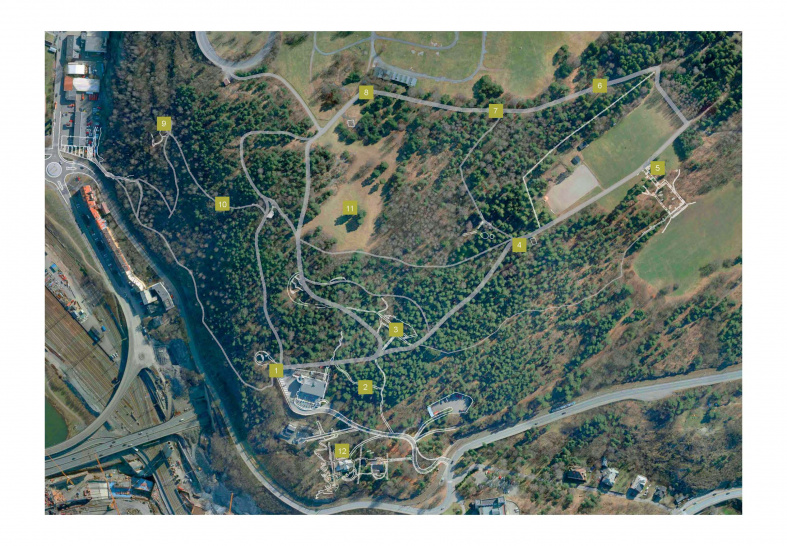Forskjell mellom versjoner av «Walks+Talks: Ekeberg park»
| Linje 1: | Linje 1: | ||
| − | [[Fil:Ekeberg Park.jpg|miniatyr| | + | [[Fil:Ekeberg Park.jpg|miniatyr|787x787px]] |
The Ekeberg Park is a forest park with sculptures and exposed archaeological sites. | The Ekeberg Park is a forest park with sculptures and exposed archaeological sites. | ||
Revisjonen fra 11. sep. 2019 kl. 13:34
The Ekeberg Park is a forest park with sculptures and exposed archaeological sites.
The Ekeberg hill stands out impressively above the Oslo city centre, and it contributes significantly to the green framing of the city. The area is an old cultural landscape marked by human activity through thousands of years. There have been discoveries going back to the stone-age 10.000 years ago: burial mounds, cup marks and stone markers. The municipality bought a large parcel of land around 1900, in order to secure a recreational area for the eastern part of the urban population, and a ‘people’s park’ was established.
Over time, the area deteriorated and became overgrown. In 2004, Christian Ringnes, a prominent businessman, took an initiative to make a sculpture park in the area. He offered the city to cover the cost of establishing and developing the park, the purchase of sculptures and the future operation and maintenance of the park, with a total budget of 300 million kroner. The city was positive: The City Council laid down the principles, Christian Ringnes provided the capital, and Bjørbekk & Lindheim were engaged as landscape architects.
What was important for us in the planning process?
We took as our point of departure the considerable time span of the area - the development of layers upon layers through thousands of years. We tried to expose and rehabilitate many of these layers. Additionally, we wanted to contribute a new layer, a new history. There would be new attractions, new meeting places, but also opportunities for new works of art and the exposing the ancient sites. We wanted to do this in a careful and respectful way, but with the formal language and the use of materials of our own time. We wanted to make an active forest park where you may move through sequences of different landscape types: Dense forest opening up in clearings, open forest with single trees, former grazing land and lookout points. Traces of the old people’s park were exposed. Paths, steps and railings were rehabilitated and improved. New viewpoints were established, and vegetation thinned. Ground vegetation was cleared, but the slender pine trees have been untouchable, the trunks help to frame the views. New lighting fixtures were developed for the park in order to make the area accessible after dark, but without contributing to any light pollution.
The Ekeberg Park adds one or two new works of art annually. So far there are 42 sculptures, many created specifically for the sites by internationally recognized artists.
Grand overview of the city
Meeting point at Ekeberg restauranten
Meeting time 9.00
You should take tram 18 from Jernbanetorget at 08.49, or tram 19 from Nasjonaltheatret at 08.38 to tram stop Ekebergparken Return using tram 19 from Ekebergparken tram stop to Nationaltheatret at 12.07. Participants of the reception at the City Hall will walk from the tram stop to the city hall.
Hosts and guides:
Christian Ringnes, CEO, Eiendomsspar AS, Initiative and financing of the Ekeberg Park, and landscape architect Tone Lindheim, project director for the Ekeberg Park.
IFLA World Congress 2019 will take a closer look at urban transformation, green mobility, healthy and beautiful landscapes and community participation. During three days in Oslo, we aim to inspire, challenge and intrigue you. We want you to share and reflect on the knowledge that is developed, presented and discussed.
Join us in moving one step further to understand and protect our COMMON GROUND.
This article is part of IFLA Common Grounds: Walk+Talk.
You can view all Walks+Talks tours here


